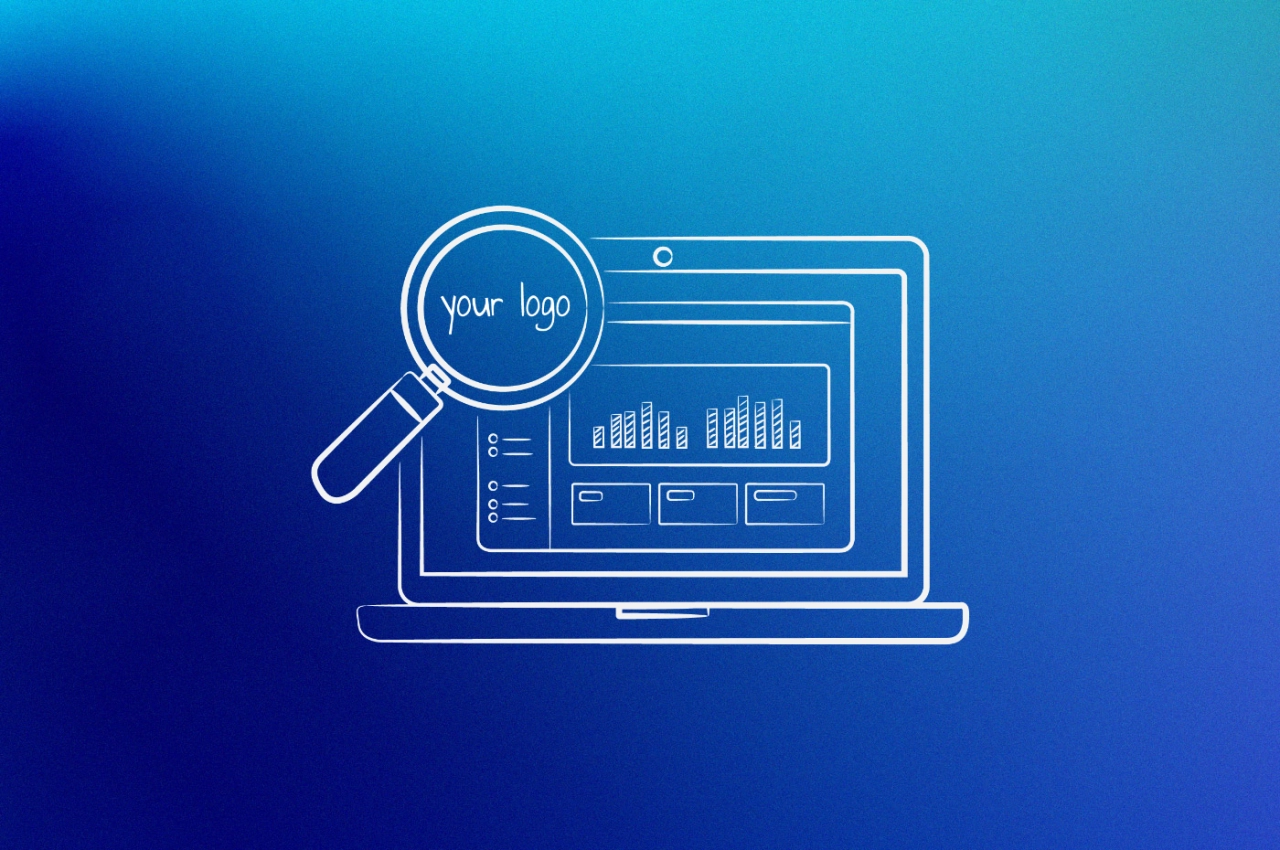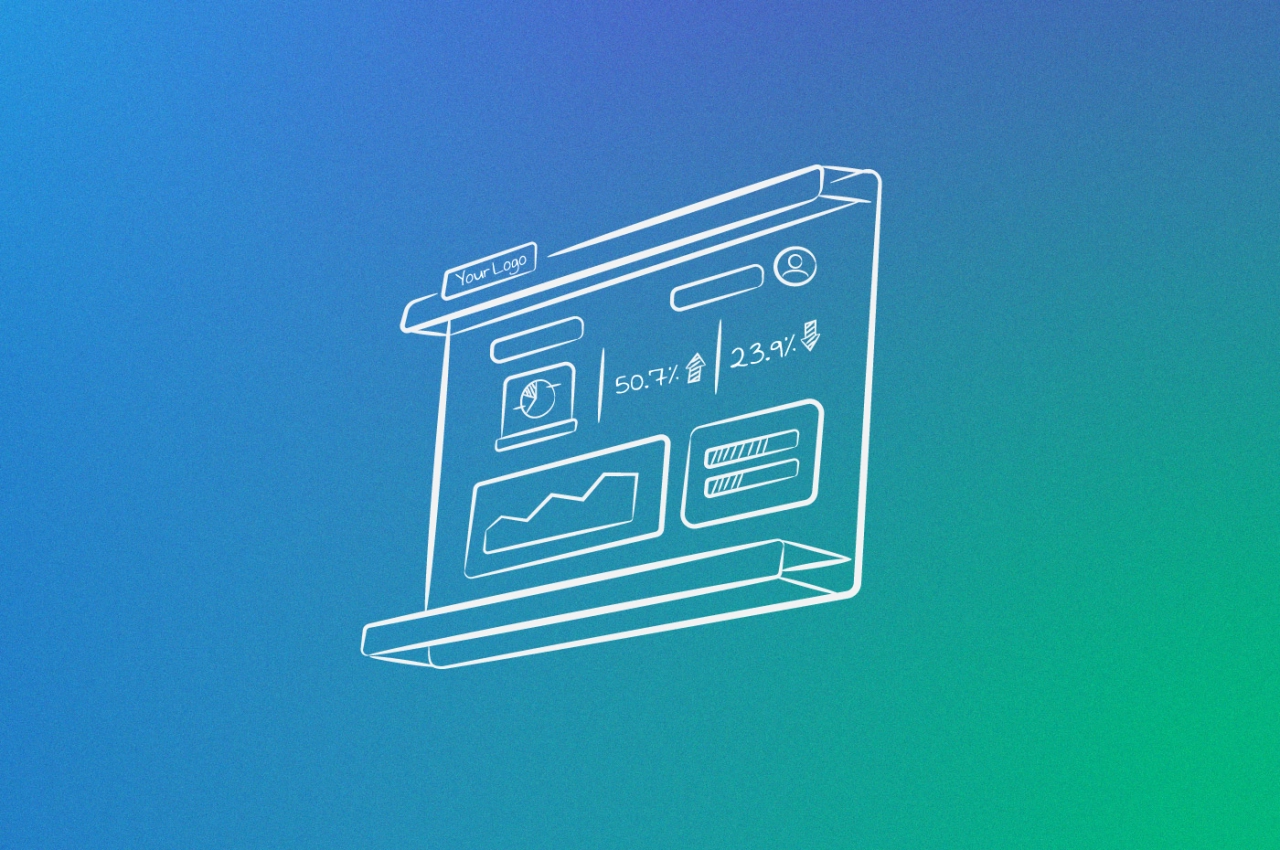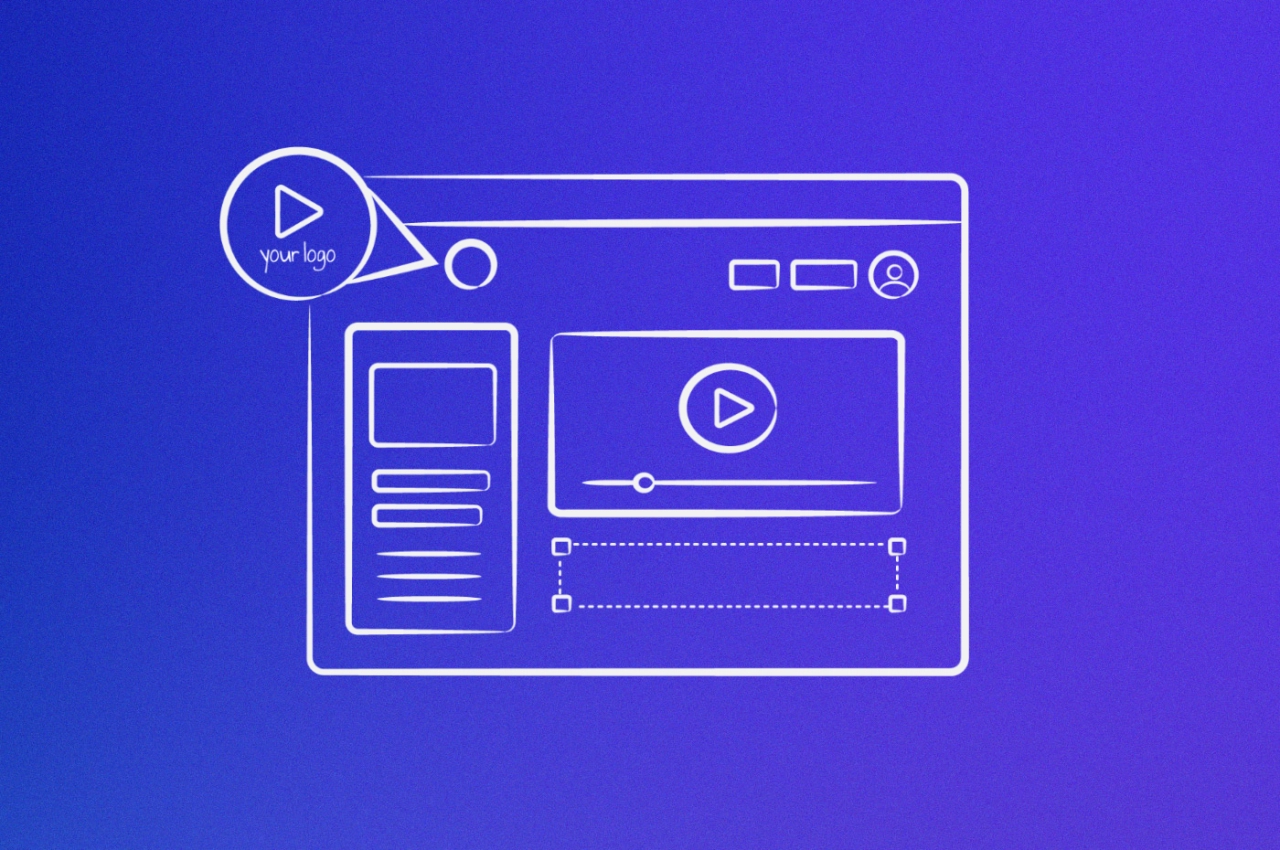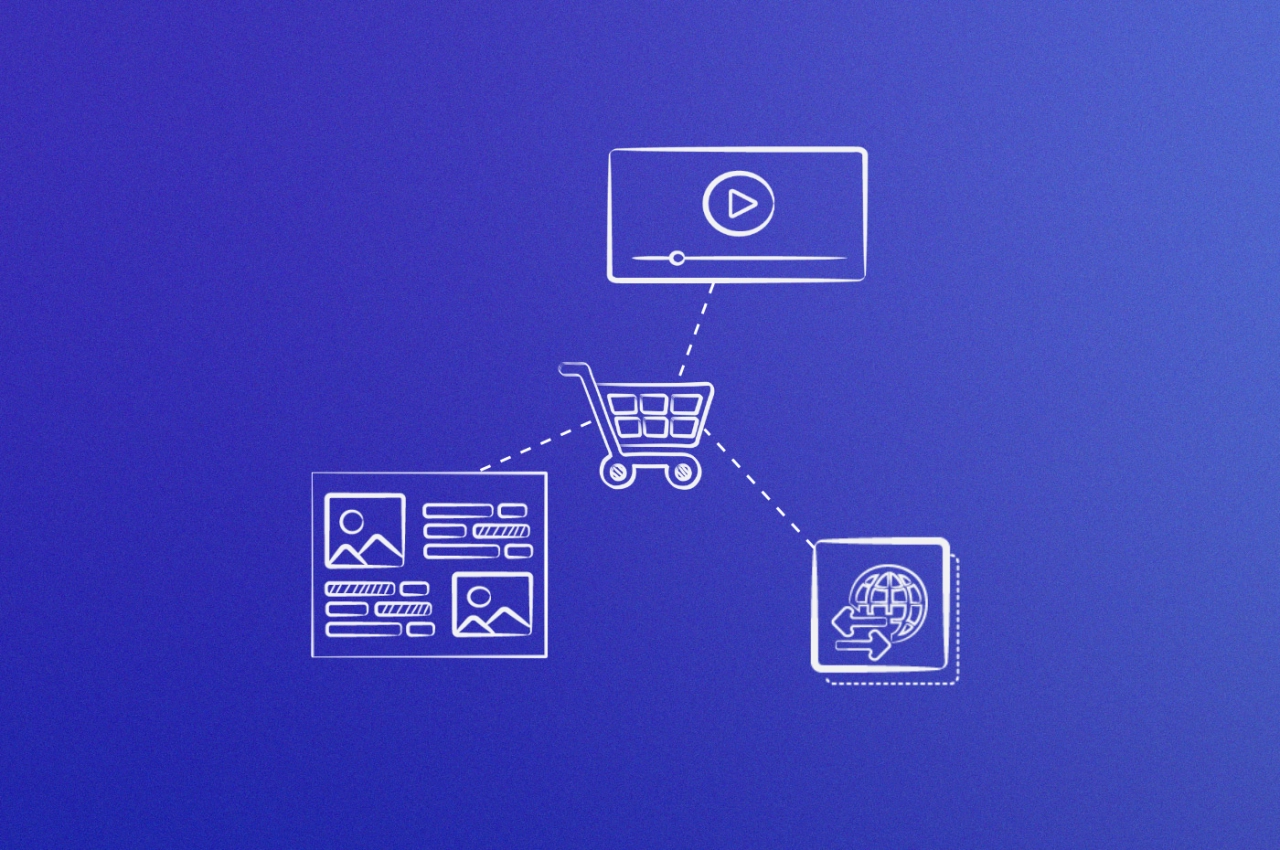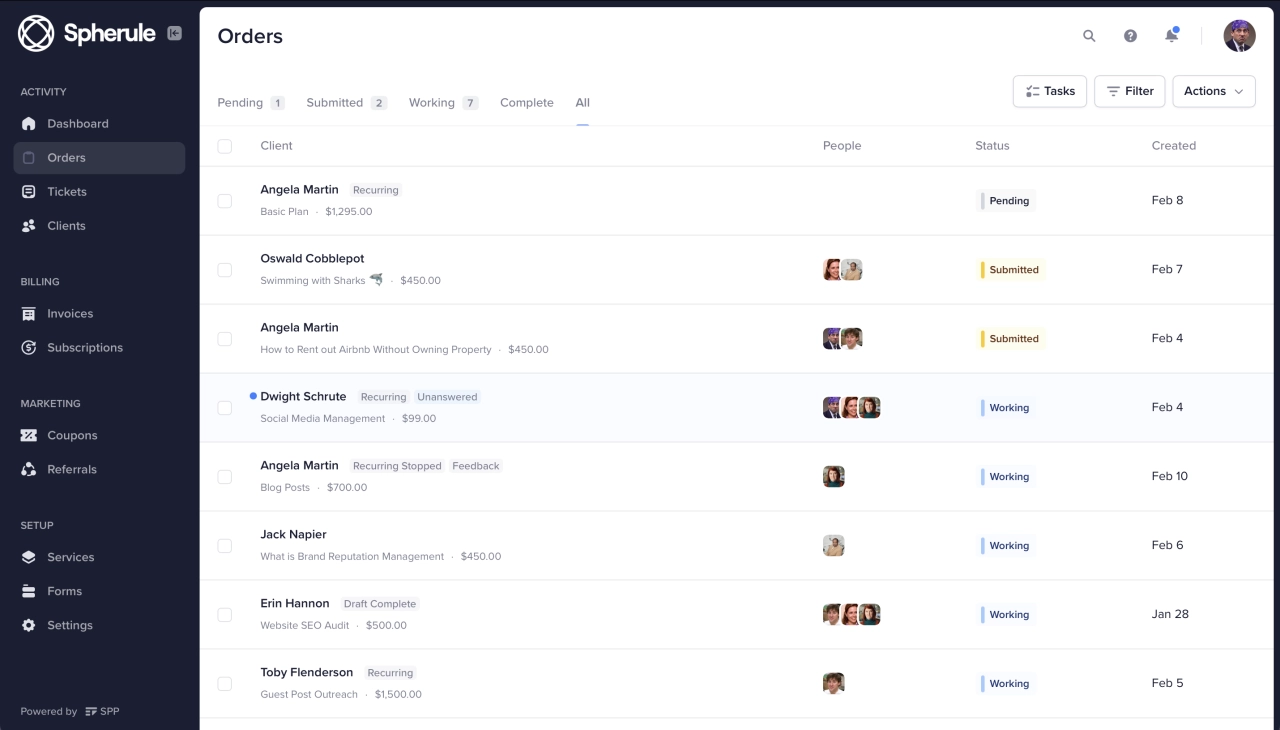- White label tools allow agencies to offer a wider range of services to clients without investing in additional resources or manpower.
- Choosing the right white label tools can help agencies provide high-quality services to their clients and increase their revenue.
- Tools range from client portals and client relationship management tools to search engine optimization tools and social media management systems.
If you want to quickly launch your idea, you don’t have time to develop the software itself. This is where white labeling products come in.
These tools allow you to apply your own branding, and make them look like your own software. This allows you to get a head start compared to your competitors who’ve chosen to built their own tools, maintain them, and fix issues.
Let me introduce you to the best white label tools for agencies, the different types available, and how to implement them.
What is a white label tool?
A white label tool is ready-made software you can rebrand as your own. Instead of building tools from scratch, agencies purchase or subscribe to these solutions and apply their branding, saving significant development time and resources.
Most white label tools are SaaS products where you pay a recurring subscription fee to the provider. The end-user should never realize the tool wasn't built by your agency—that's the whole point.
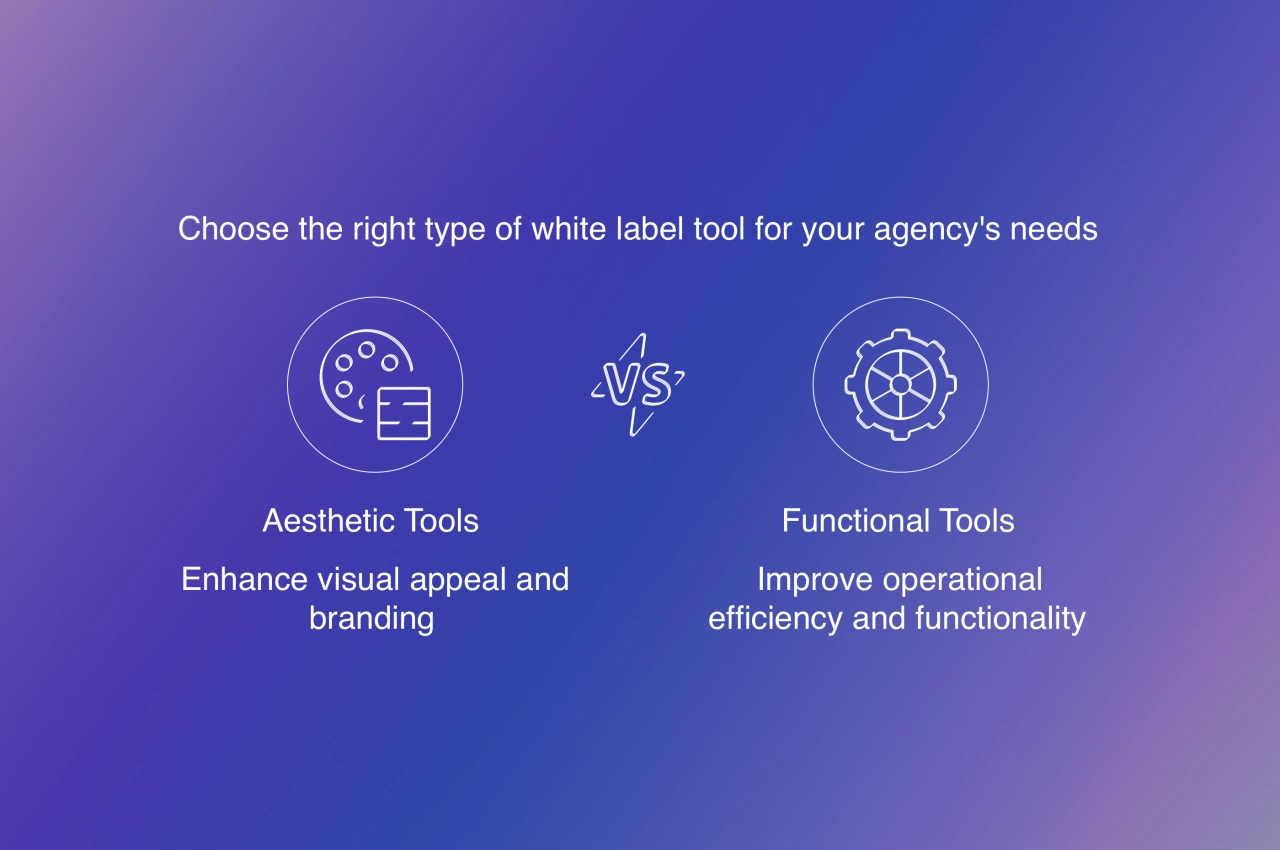
There are two main types to know about:
1. Visual white label tools: These allow you to change logos, colors, and branding elements. The functionality remains fixed, but the appearance matches your brand.
2. Functional white label tools: These let you customize both appearance and functionality. For example, many SPP users embed custom Looker Studio reports within their client portals—making the entire solution feel tailor-made.
Now, let’s focus on the specific tools your agency needs to deliver exceptional white labeled services to your clients.
Top 7 white label tools for agencies
Now that we’ve gone over what white label tools are and why they’re so beneficial for agencies, it’s time to take a look at some of the best white label tools on the market.
1) Service Provider Pro (SPP)
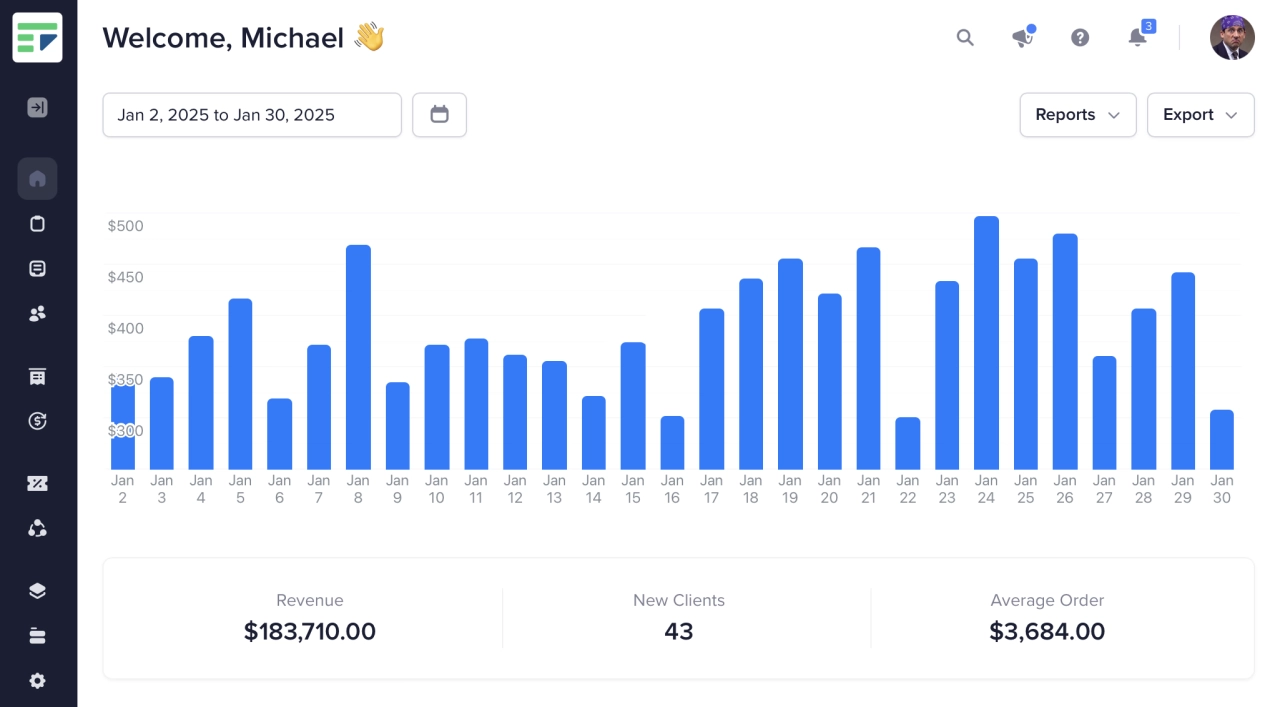
SPP is a white label client portal tool that was designed with agencies in mind. It’s packed with features that will make your life (and your clients’ lives) easier, such as:
automatic account creation
intuitive invoicing and billing
project management capabilities
custom order statuses & tags
integrations with popular tools
And best of all, SPP is highly customizable. Everything can be changed, so that the product you present to clients and team members is truly your own. This includes branding basics like logos and color palettes, as well as functional white label elements like menus, custom domains, and embedded reports.
Plus, if you’re looking for total control over the look and function of the SPP client portal, you’re free to dive into the code to make any adjustments you’d like—big or small!

SPP.co has been a key ingredient in our winning recipe for a successful productized service. It's easy for staff to use and customers love the client portal software for managing their service account.Watch the case study →

One of its greatest features is the white label form builder, which allows you to design custom order forms, intake forms, and contact forms. The forms help you capture leads, turn them into clients, and gather relevant information to start your work.
Pricing: Plans start at $129/month (billed monthly) after a 14-day, risk-free trial.
2) Hootsuite
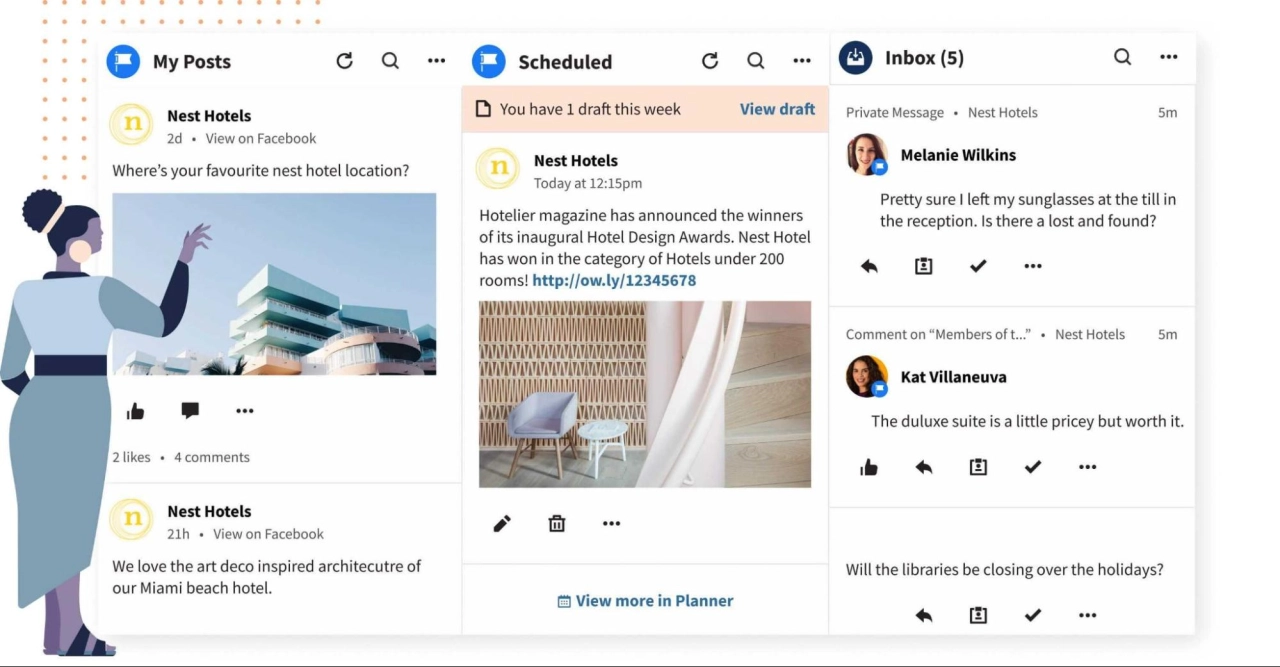
If you manage social media for clients, Hootsuite is a white label tool you need to be aware of. It’s a powerful platform that gives you the ability to:
schedule and publish content
analyze social media analytics
track competitor activity
create detailed reports
With Hootsuite, you can create and send reports to clients using templates based on your brand assets. These reports are fully customizable—everything from the color palette to the contents can be edited and adjusted. As a result, you’re able to provide your clients with the seamless, branded experience they deserve—without any extra work on your end.
Hootsuite is a great place to manage all of your social media platforms in one spot. Being able to create and implement teams for collaborative posting is a tremendous help as a social media manager.
 Shawn Lasher,
Thompson Golf Group
Shawn Lasher,
Thompson Golf Group
And if you’re worried about managing multiple clients in Hootsuite… don’t be! The platform’s team management features make it easy to keep track of who’s working on what, and to give team members the access they need to do their job.
Pricing: Plans start at £39/month (billed monthly) after a 30-day free trial.
3) Mention
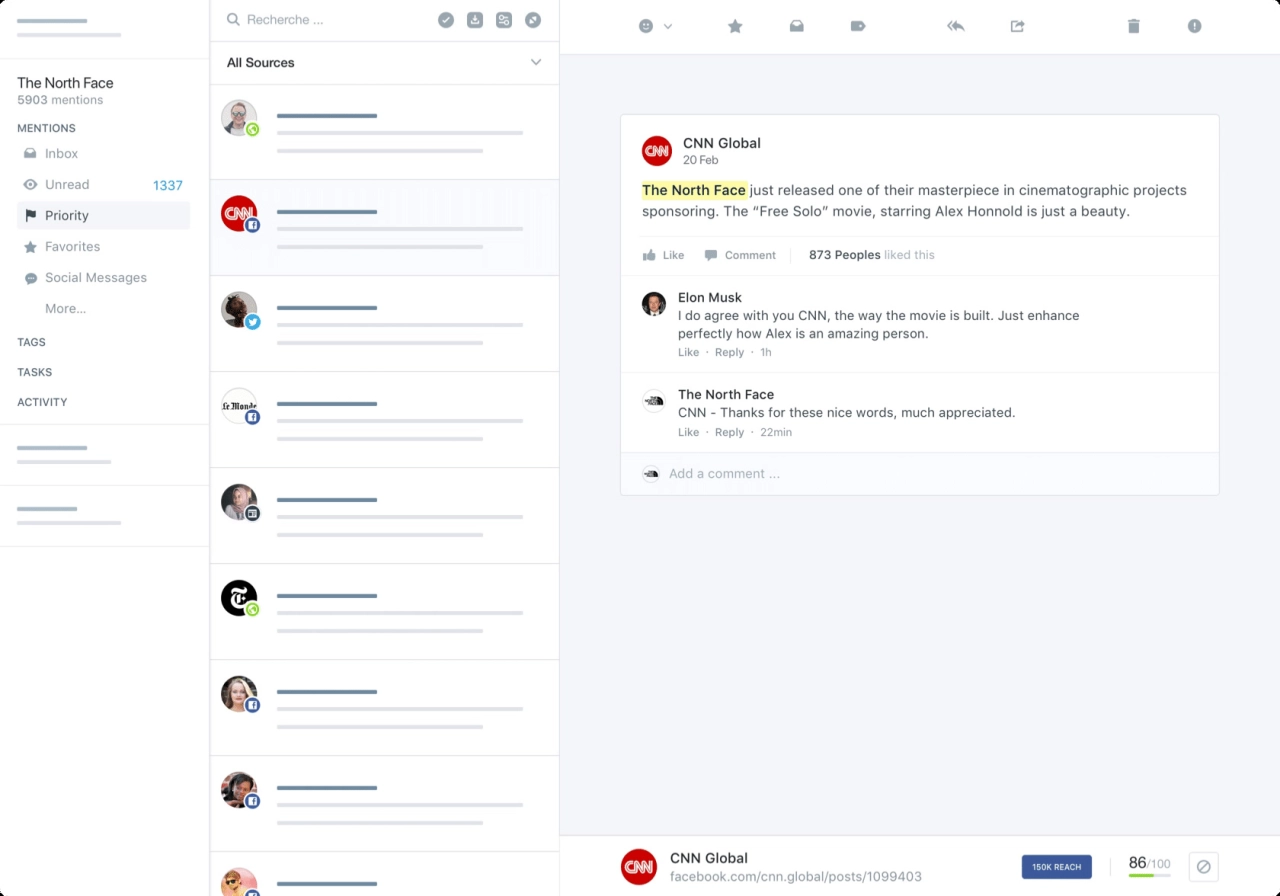
Mention is a white label social media monitoring tool you should definitely have on your radar. As an all-in-one platform, it gives you the ability to:
monitor media and social media for client mentions
program advanced, conditional alerts using keywords
schedule social media posts
generate detailed reports
Similar to Hootsuite, Mention gives you the ability to create, customize and send branded reports to clients–and even schedule the delivery.
Mention allows us to create alerts and allow us to perform searches with our filters. We can easily monitor the profiles of our brand. With the searched keywords we can easily review and digest the email list. Their dashboards and is very simple to use and we do not have to learn many skills to use their dashboards.
 Agatka Jackson,
Philips
Agatka Jackson,
Philips
On top of the reports, you can track detailed metrics such as total social media and web mentions as well as generate graphs and charts that visually display your progress over time.
Pricing: Mention offers a fairly generous free plan, with paid plans starting at $24/month (billed annually).
4) Looker Studio

This white label reporting tool is 100% free to use, and it gives you the ability to:
create custom reports using templates or from scratch
pull data from multiple data sources
share reports with clients or team members
collaborate on reports in real-time
schedule reports to be delivered automatically
tailor the program to agency needs
Looker Studio’s drag-and-drop interface simplifies report creation, even for those with no design experience. With that being said, there is definitely a learning curve before you’ll feel confident with the tool. It’s well worth the effort, Looker Studio is incredibly flexible once you get the hang of it.
The platform integrates with over 200 data sources, so there’s a large amount of customization potential. Connect to Google products such as Google Sheets, Google Analytics, and Google Search Console, as well as external tools via Community Connectors.
Pricing: Free!
5) OptinMonster
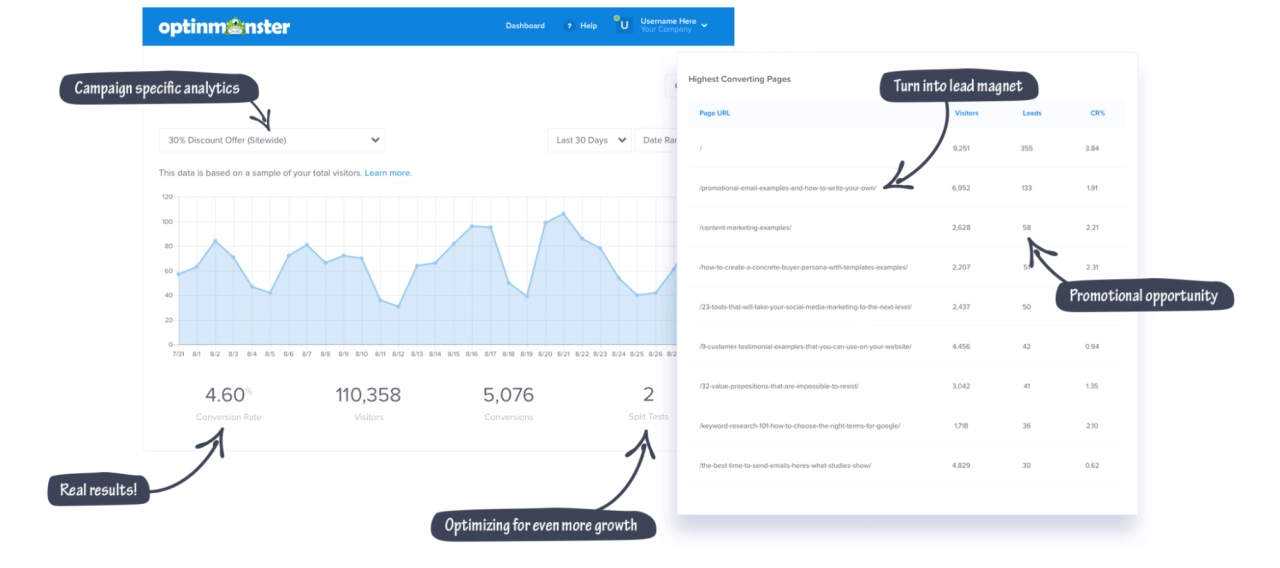
OptinMonster is a white label advertising platform that helps agencies capture more leads and convert more visitors into leads and paying customers. It’s a powerful platform that gives you the ability to:
create beautiful lead capture forms, pop-ups, and slide-ins
target forms based on visitor behavior
add forms to any website or landing page
split test forms for improved performance
generate detailed reports
With OptinMonster, you can create customized lead capture forms that match your agency’s (or client’s) brand and style. Plus, the platform makes it easy to add forms to any website or lead gen page—no coding required!
And if you’re looking for ways to improve your form’s performance, OptinMonster’s A/B testing and reporting capabilities will come in handy.
Pricing: Plans start at $9/month (billed annually).
6) Reviewgrower
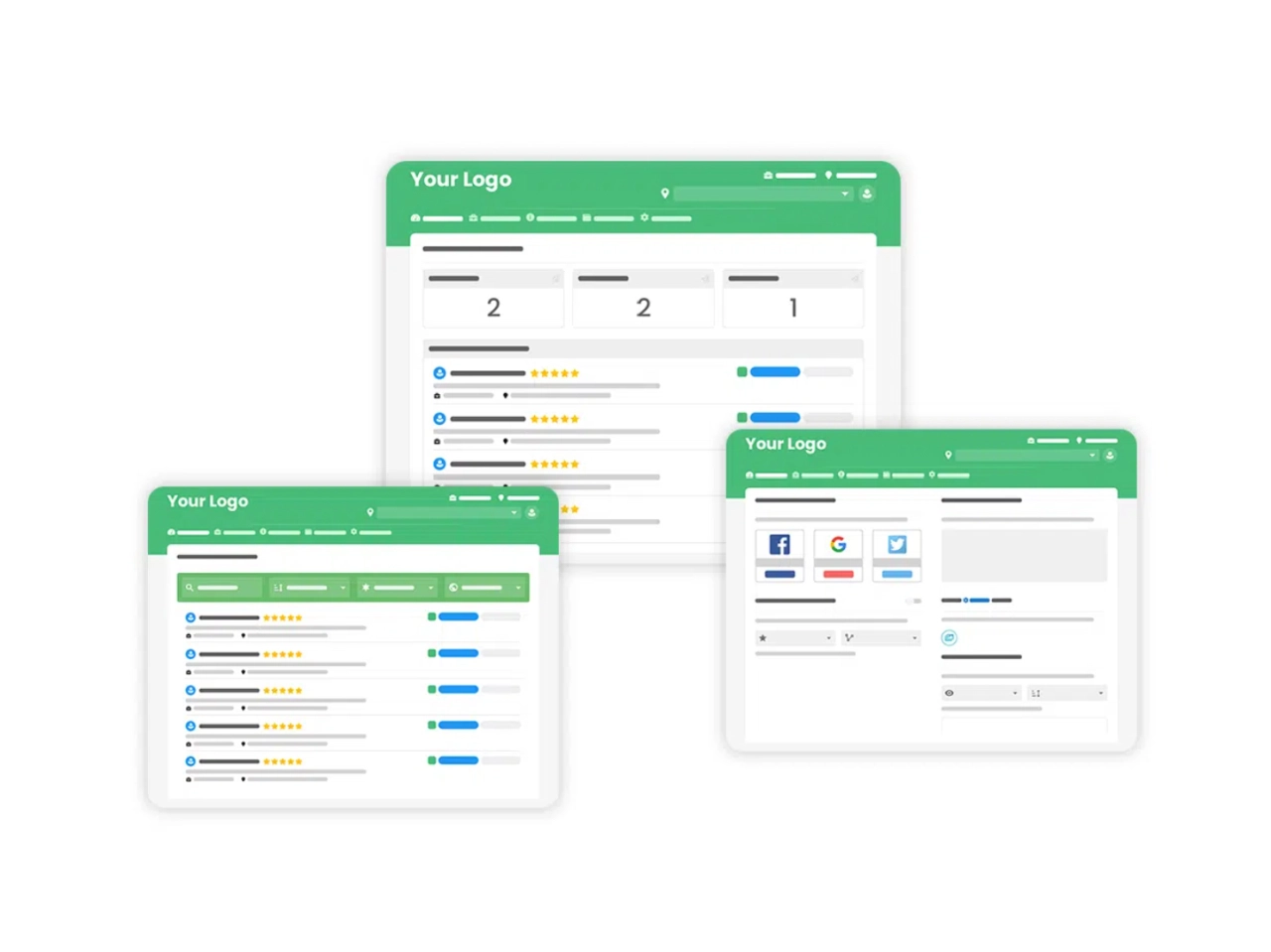
Reviewgrower is a 100% white label reputation marketing tool that helps agencies manage their clients’ online reputations.
When compared to other reputation management resellers, Reviewgrower stands out as a simple yet powerful platform, that gives you the ability to:
generate automated review requests via email or text message
monitor 80+ review sites
perform in-depth segmentation analyses
integrate with 200+ tools and apps
Create customized dashboards that match your agency’s brand and style and monitor reputations across multiple locations. This way you can quickly identify and address any negative reviews wherever they arise.
Pricing: Plans start at $99/month (billed annually). There is a very limited free forever plan available.
7) Whatagraph

Whatagraph is a marketing intelligence platform that connects, standardizes, and reports on multi-source marketing data in one place. It helps digital marketing agencies deliver accurate, white-labelled reports at scale, and get actionable insights for growth.
Designed for complex campaigns, Whatagraph handles unlimited data sources and delivers polished, client-ready reports that scale effortlessly.
With Whatagraph, you can customize every report to meet client’s expectations:
upload your or your client’s logo for a fully personalized look
match your reports to brand guidelines with custom color schemes
add branding elements to headers and footers
host and share reports on your own custom domain
adjust widget colors and icons to align with your brand’s aesthetic.
You can easily create a custom theme for a single report or the whole agency.
Whatagraph serves as a powerful hub, connecting all my marketing data sources in one centralized platform. Gone are the days of juggling multiple tools and struggling to consolidate information from various channels.
 Yunus K.,
Manager
Yunus K.,
Manager
With AI-powered insights and instant access to data and trends, Whatagraph saves teams hours on reporting so they can focus on delivering results and building client trust with timely, data-driven insights.
Pricing: Whatagraph offers custom pricing plans based on the amount of “source credits” and access to customization and data organization capabilities.
8) Swydo
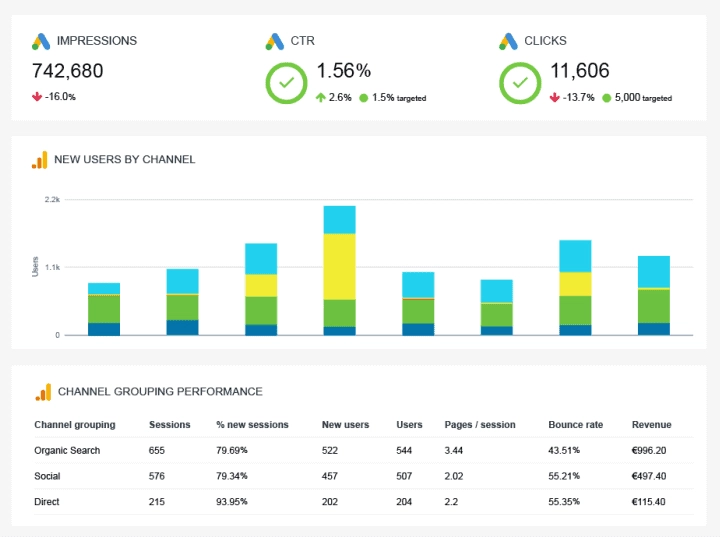
Swydo is a white label reporting tool that gives agencies the ability to create, schedule, and automatically deliver beautiful SEO, PPC, and social media reports to clients. With Swydo, you can:
generate reports using templates or custom designs
schedule reports to be delivered automatically
group clients together for easy management
monitor data in real-time through custom dashboards
use data from popular tools like Google Analytics and AdWords
A white label report by Swydo is fully customizable, so you can brand it with your agency’s logo, colors, and contact information. Swydo integrates with over 70 popular tools, making it easy to collect the data you need to create comprehensive reports.
Pricing: Plans are customized based on the number of data sources you’d like to include.
Why are white label tools important for agencies?
White label tools are important for agencies for a few key reasons:
They save time: When an agency has to start from scratch and build a tool from the ground up, it takes a lot of time (not to mention money). White label tools provide agencies with a head start by giving them a pre-built product that they can brand as their own.
They improve client relationships: Because white label tools give agencies a way to offer more value without incurring extra costs, they allow agencies to build stronger relationships with their clients. In other words, white label tools are one more way that agencies can differentiate themselves from the competition.
They offer more flexibility: White label tools offer agencies the ability to tailor the software to their specific needs and branding. This gives agencies a lot more control over the final product, which is important when trying to build a unique brand identity.
They improve brand cohesion: When an agency uses white label tools, they can be sure that their branding will be consistent across all of their products and services. This is important for building a strong and recognizable brand.
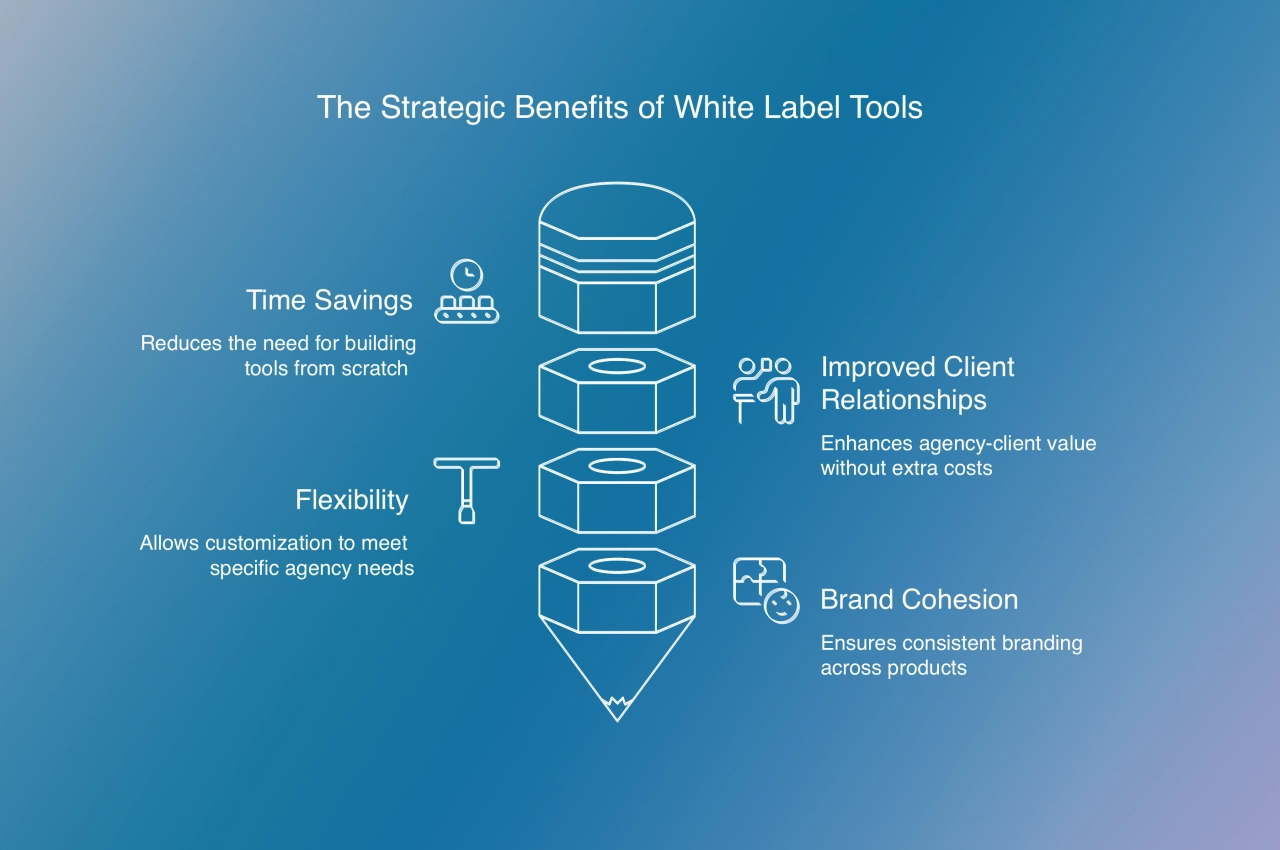
In short, white label tools offer agencies a number of advantages that can help them better serve their clients and grow their business.
White label agency tool finder
What kinds of white label tools should agencies consider?
White label tools serve all kinds of purposes—think of any kind of software and there’s sure to be a white label solution available. But what about software that is specifically relevant to agencies?
Here are some white label solutions agencies should take a look at:
Client portals: A white label client portal is a central hub where clients can access all the information they need—from contact information to project status updates and invoices. Of all the tools you use, client portals are one of the most important to white label, as their purpose is to be a client-facing brand asset.
Client relationship management (CRM) tools: CRMs are tools that help agencies manage their client relationships, from first contact to project completion. A white label CRM system will allow you to customize the tool to match your agency’s branding and workflows.
Social media management (SMM) systems: White label social media management software help digital marketing agencies manage their social media marketing, including scheduling posts, analyzing analytics, and more. A white label social media management system allows agencies to quickly generate branded reports for clients without the hassle of building them from scratch.
Search engine optimization (SEO) tools: White label SEO tools make it possible for agencies to track their website’s performance in search engine results pages (SERPs), identify keywords, and optimize their content for better visibility. Like SMMs, white label SEO software helps agencies brand their client communications quickly and easily.
All of these different tools can be incredibly valuable to agencies. You know—you’re probably already using some (or all) of them! But today, we’re going to be focusing on white label solutions that you may not have heard of.
Implementing white label tools
White label tools can transform your agency’s service offerings, but implementation requires careful planning. Let’s look at how to effectively roll out these tools without disrupting your existing workflows.
Creating your implementation plan
The first step to successful white label implementation is a clear, structured plan. Without proper planning, you risk wasting precious time and resources—not to mention potentially confusing both your team and clients.
Start by documenting your current processes and identifying exactly where your white label tools will fit. This is particularly important if you’re replacing existing systems rather than introducing completely new functionality.
Depending on your agency’s size and the complexity of the white label solution, your implementation timeline might look something like this:
Discovery phase (1–2 weeks)
audit current workflows
document integration requirements
identify team members for implementation committee
set measurable success criteria
Setup phase (1–3 weeks)
configure branding elements
set up user accounts and permissions
customize client-facing elements
perform integration testing
Testing phase (1–2 weeks)
run internal testing with sample projects
gather feedback from key team members
make necessary adjustments
document common issues and solutions
Deployment phase (1–2 weeks)
roll out to a small client group first
monitor performance closely
address any issues immediately
document client feedback
Optimization phase (ongoing)
regular review of tool usage metrics
continuous staff training on advanced features
implementing client feedback
exploring additional customization options
With that said, don”t feel like you need to follow this timeline exactly. Your agency’s specific needs might require a shorter or longer implementation period. The important thing is having a structured approach rather than trying to wing it.
Staff training is non-negotiable
I’ve seen many agencies invest in great white label tools only to have them fail because they skimped on proper training. Even the most intuitive platforms require some level of onboarding for your team to use them effectively.
Create a comprehensive training program that includes:
live demonstration sessions
hands-on practice opportunities
process documentation with screenshots
video tutorials for reference
regular check-ins to address questions
For SPP users, I recommend starting with the client portal setup, then moving to order forms, and finally diving into automation features. This tiered approach prevents overwhelm and allows your team to build confidence gradually.
The same applies to tools like Whatagraph or Hootsuite—start with core features before moving to more advanced functionality. Your team will thank you for the manageable learning curve.
Integration with existing systems
Herein lies one of the biggest challenges of implementation: making your new white label tools play nicely with your existing tech stack. Most agencies already use various tools for project management, communication, and billing.
Before finalizing your implementation plan, map out all required integrations.
Ask yourself:
Do we need real-time data synchronization?
Which system will be the source of truth for client information?
Are there API limitations we need to work around?
What contingency plans do we need if integrations fail?
If you're using SPP, you can leverage its Zapier integration to connect with hundreds of other applications. For other white label tools, check whether they offer direct integrations or API access for custom connections.
Remember that perfect integration rarely happens on the first try. Budget extra time for troubleshooting and refining your integration setup.
Performance monitoring and KPI tracking
Fret not about measuring success—most white label tools come with built-in analytics. However, it’s up to you to define what metrics matter most for your agency.
Consider tracking:
time saved per client project
client satisfaction scores
team adoption rates
revenue per client
project turnaround times
For client portal tools like SPP, measure metrics like client login frequency and support ticket resolution time. For reporting tools like Whatagraph or Looker Studio, track report generation time and client engagement with delivered reports.
Set up monthly reviews to assess these metrics and identify opportunities for optimization. This data-driven approach ensures you’re continuously improving your white label implementation.
Frequently asked questions
What tools support white-label options for agencies?
Top white-label tools include AgencyAnalytics (reporting), Vendasta (full business suite), and DashThis (dashboard creation). Look for custom branding, client login portals, API access, and co-branded communication features. Many CRM, project management, and marketing automation tools offer white-label options for agencies.
Expand your brand with white label tools
As an agency, it’s important to make use of software that helps you succeed. White label tools are a great way to further strengthen your brand and credibility.
Those looking to sell services should take a closer look at Service Provider Pro (SPP), a client portal platform that gives agencies the ability to:
keep track of projects and deadlines
communicate with clients in real-time
store and share files securely
share project updates and info
Make SPP your own by uploading your agency’s logo, use your brand colors, as well as custom domain. And combine it with the other mentioned white label marketing software for agencies to succeed with your business.
If you need more functionality, connect your favorite tools with our integrations, or build on top of SPP with Zapier and our API.
